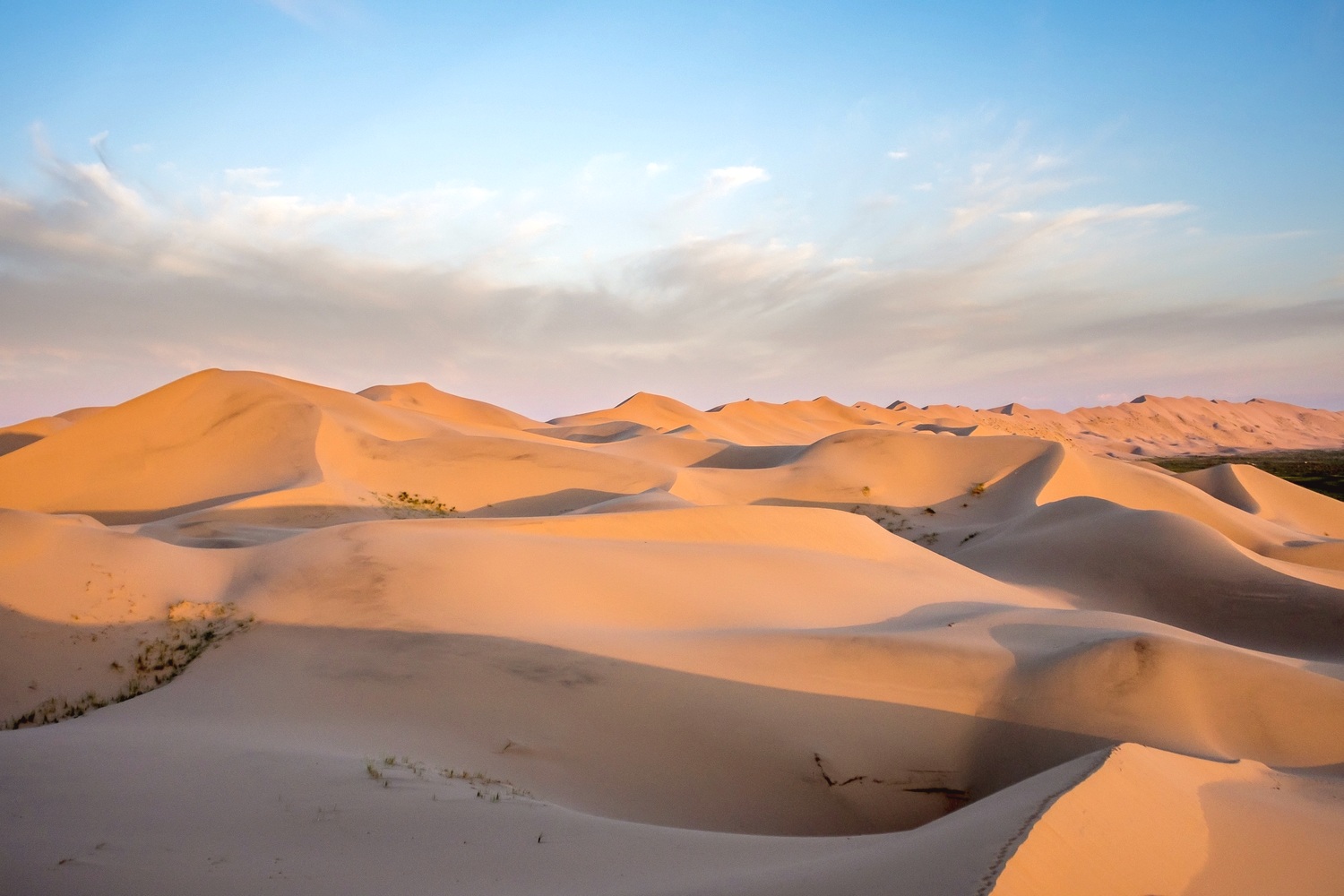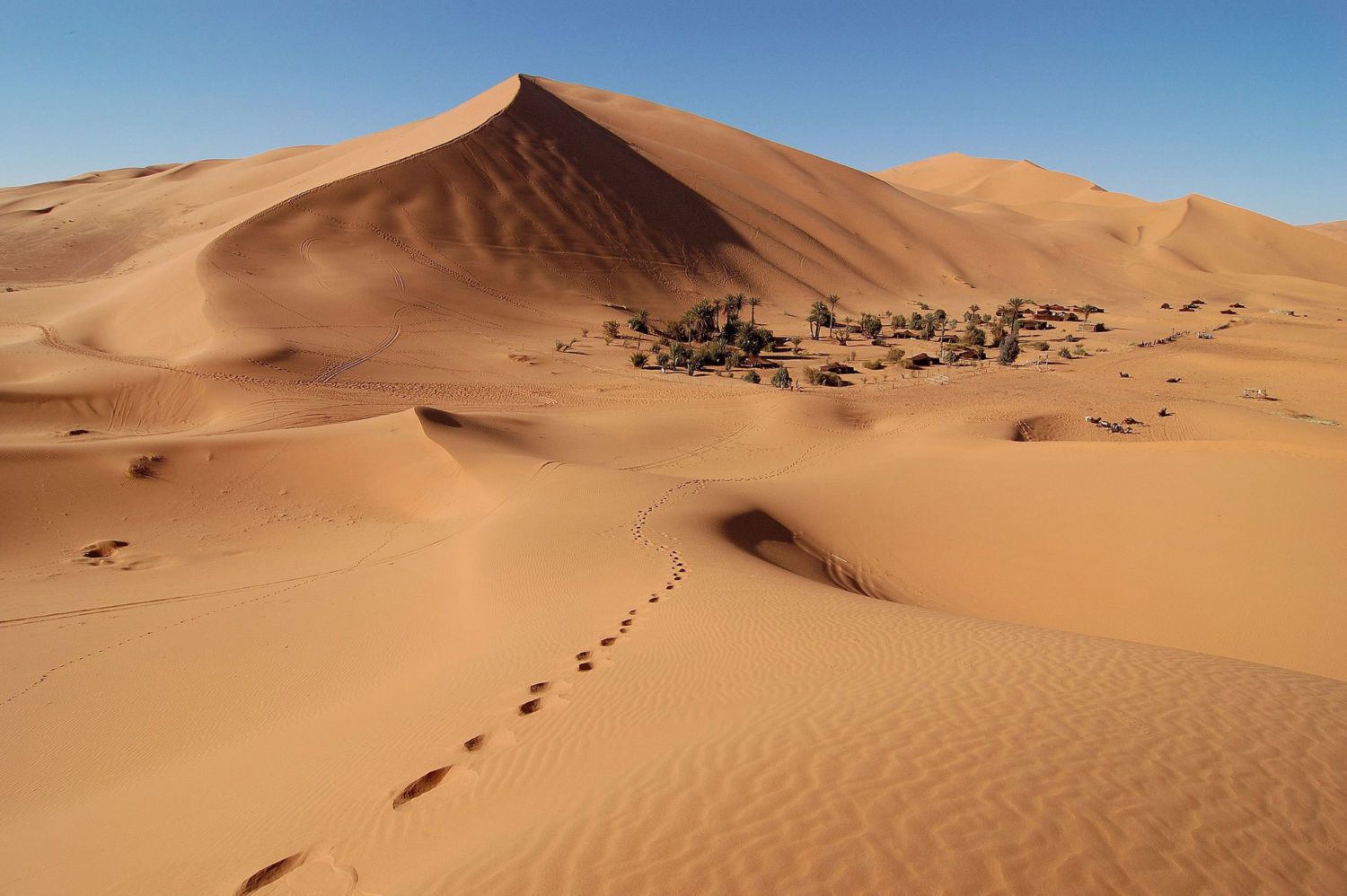Deserts are undoubtedly one of the most fascinating natural phenomena on the globe out of all the wonders that mother nature has to offer. Regions that receive very little precipitation year-round are known as desert landscapes. Life is extremely difficult for humans as well as for animals and plants due to this great shortage of rain. Only a small number of species of plants and animals can naturally endure these harsh circumstances. Desert area makes up about 33%, or nearly 1/3, of the landmass of the planet. In fact, there are a definite number of desert regions on every continent. In actuality, the top five largest deserts in the world are larger than the majority of nations on Earth.
The majority of people picture deserts as hot, arid places where all they can see is sand. True, the majority of deserts are quite hot. Yet there are also frigid deserts, or as they are sometimes called, “polar deserts.” Around the two polar rings in the Arctic and Antarctica are these deserts. In actuality, cold deserts are much less hospitable to life and more inhospitable than hot deserts. Ice and snow alone might completely encircle the area. Nonetheless, sand dunes can also be found in cold deserts, which give them the appearance of hot deserts. The following ranking will give you a sense of the size and power of these harsh regions by listing the top five largest deserts in the world.
5. GOBI DESERT

- Desert Type: Cold desert
- Location: Eastern Asia
- Area Size: ~ 1.3 million square miles
The Gobi Desert is a sizable desert region that can be found in southern Mongolia and northern and western China. It is one of the world’s biggest deserts and encompasses an area of over 1.3 million square kilometers. The Bactrian camel, Gobi bear, and Mongolian wild ass are just a few of the unusual plant and animal species that may be found in the Gobi Desert, which is distinguished by its rocky terrain, sand dunes, and scarce flora. With a long history of human occupation and trade stretching back thousands of years, the area is also significant culturally. Several significant fossils finds, including the earliest known dinosaur eggs, have been unearthed in the Gobi Desert, making it an essential area for scientific investigation.
Coal, copper, and gold are just a few of the valuable minerals found in the desert, which has recently undergone tremendous economic growth. Yet, this change has also had an effect on the ecosystem, putting more strain on water supplies and causing biodiversity to decline. Concerns about climate change include increased desertification and the disappearance of vital livestock grazing land as a result of rising temperatures and shifting rainfall patterns. A variety of initiatives are being made to encourage sustainable development in the area, such as the creation of renewable energy sources and the adoption of conservation measures to save the distinctive flora and wildlife of the Gobi Desert.
4. Arabian Desert

- Desert Type: Arid hot desert
- Location: Middle East / Western Asia
- Area Size: ~ 2.3 million square miles
Over 2.3 million square kilometers of the Arabian Peninsula are taken up by the huge Arabian Desert. It is one of the top five largest deserts in the world and is renowned for its intense heat, with daytime highs frequently topping 50°C (122°F). The sand dunes, gravel plains, and rocky mountains that make up the Arabian Desert are home to a wide range of unusual plant and animal species, such as the Arabian oryx, sand gazelle, and desert hare. With a lengthy history of human occupation and trade stretching back thousands of years, the area is also significant culturally. The rise of towns like Dubai and Riyadh, as well as the growth of the oil and gas industry, have significantly changed the Arabian Desert in recent years.
Rising demand for water supplies and biodiversity loss, this has an effect on the natural environment. There are initiatives being made to encourage sustainable development in the area, such as the creation of renewable energy sources and the adoption of conservation strategies to safeguard the distinctive flora and wildlife of the Arabian Desert. The area also faces problems brought on by climate change, such as rising temperatures, altered rainfall patterns, and the prospect of desertification, all of which might have significant effects on the region’s ecosystem and economy.
3. Sahara Desert

- Desert Type: Arid hot desert
- Location: Northern Africa
- Area Size: ~ 3.5 million square miles
The Sahara Desert, which spans an area of around 3.5 million square miles, is the biggest hot desert in the world. It’s in northern Africa and extends through Algeria, Chad, Egypt, Libya, Mali, Mauritania, Morocco, Niger, Sudan, and Tunisia, among others. The Sahara is a severe region characterized by high temperatures, a lack of water supplies, and extensive stretches of desolate terrain. Despite these challenges, the area is home to a number of unusual plant and animal species, including reptiles like snakes and lizards as well as mammals that have adapted to the desert, including camels and fennec foxes. With evidence of human occupancy in the Sahara extending back thousands of years, the region has a rich cultural heritage.
Many ancient civilizations, including the Egyptians, Carthaginians, and Romans, formerly called this area home. It has long served as a crucial crossroads for trade and cultural interaction between Africa and the Mediterranean region. Rising temperatures and altered rainfall patterns are contributing to increased desertification and the extinction of species in the Sahara, which is also being affected by climate change. There are initiatives underway to encourage sustainable development in the area, such as the creation of renewable energy sources and the adoption of conservation measures to safeguard the distinctive Saharan flora and animals.
2. Arctic Polar Desert

- Desert Type: Polar cold desert
- Location: Arctic Circle
- Area Size: ~ 5.4 million square miles
The Arctic Polar Desert, sometimes referred to as the Arctic tundra, is a sizable area that is mostly contained within the Arctic Circle and is found in the northern section of the world. It is the second largest among the top five largest deserts in the world. It is a polar desert because the area is one of the driest in the world, very cold, arid, and has little precipitation. The bleak environment of the Arctic tundra is typified by huge expanses of rock, ice, and low-lying flora. The Arctic tundra is home to a wide variety of plant and animal species, including caribou, polar bears, arctic foxes, and different types of birds, despite the hard conditions.
Moreover, the area is a significant carbon sink and plays a crucial role in the regulation of the world climate. The Arctic Polar Desert extends across numerous nations, including Russia, Canada, Norway, Greenland, and the United States, and occupies an area of around 5.4 million square miles. Indigenous groups have altered their way of life to survive in some sections of the Arctic tundra, and they live there. The Arctic Polar Desert is being significantly impacted by climate change, with rising temperatures driving the melting of permafrost and sea ice, which can have far-reaching effects on the ecosystems of the area and the global climate system.
1. Antarctic Polar Desert

- Desert Type: Polar cold desert
- Location: Antarctica
- Area Size: ~ 5.5 million square miles
In the continent of Antarctica, there is a region known as the Antarctic Polar Desert. It is so arid and has so little precipitation that it is referred to as a polar desert. With only 200 millimeters (7.9 inches) of precipitation on average each year, it is actually thought to be the driest place on Earth. The Antarctic Polar Desert is home to a variety of unusual plant and animal species, including penguins, seals, and algae, despite its exceptionally low temperatures and severe environment.
The area is also very interesting from a scientific standpoint since it gives academics a chance to look at how climate change affects a natural habitat. With the exception of a few research outposts, the 5.5 million square mile Antarctic Polar Desert is primarily uninhabited by people. Without specialized tools and supplies, humans would struggle to survive in the region’s harsh environment.
The top five largest deserts in the world differ in terms of their weather, topography, and plant and animal life. Extreme temperatures and scarce water supplies, which are present in all of them, make them difficult conditions for both human existence and ecological sustainability.
Despite these difficulties, the deserts are also home to a wide range of rare plants and animals and have a substantial cultural and economic impact on the areas in which they are found. In order to lessen the effects of climate change and maintain the distinctive ecology of these vast and breathtaking landscapes, efforts are being made to encourage sustainable development and conservation measures in these areas.














